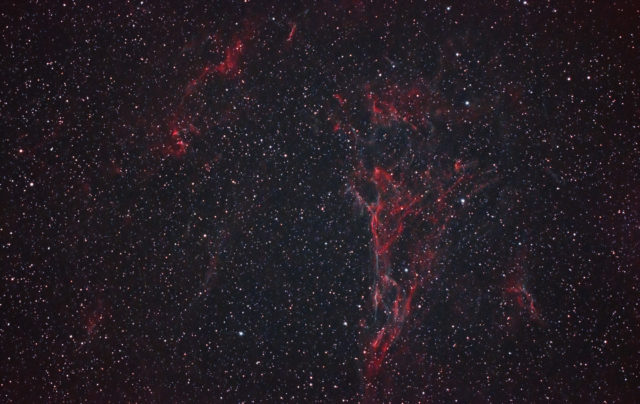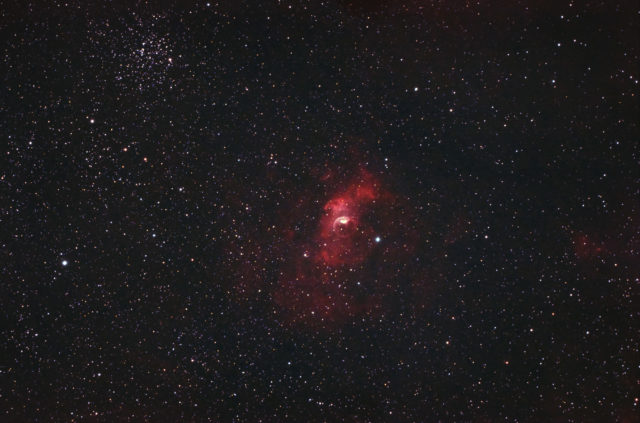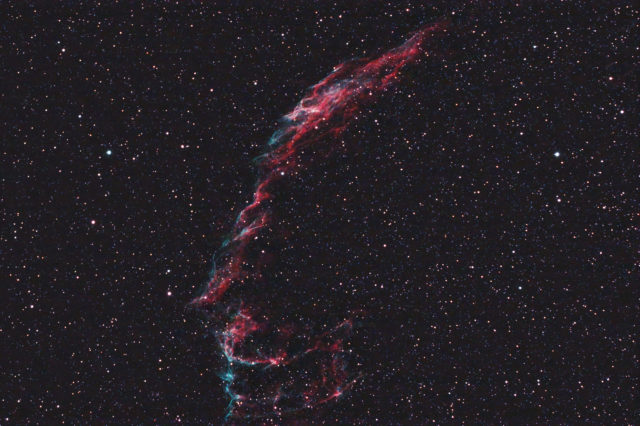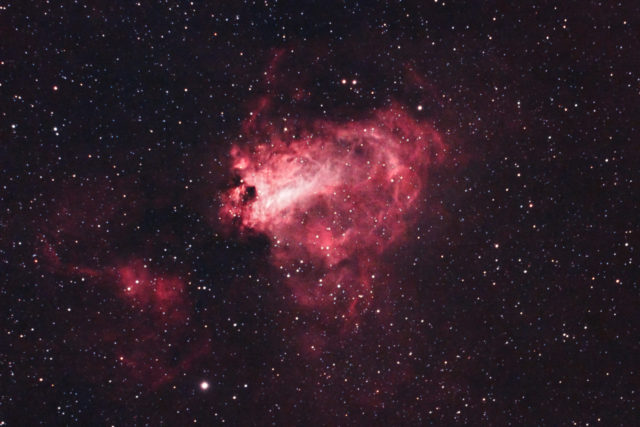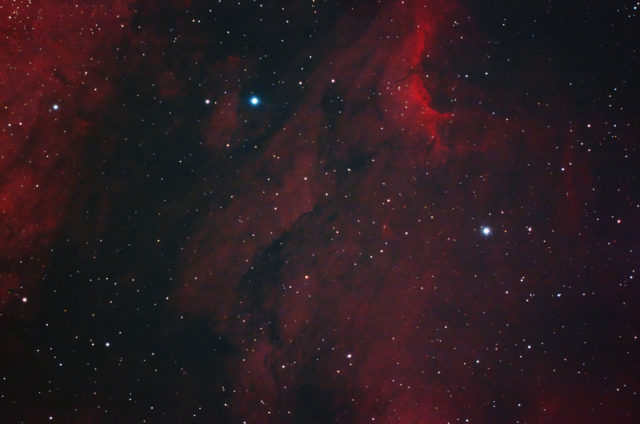
Category Archives: Nebulae
Pickering’s Triangle on Nov 18, 2020
Thor’s Helmet
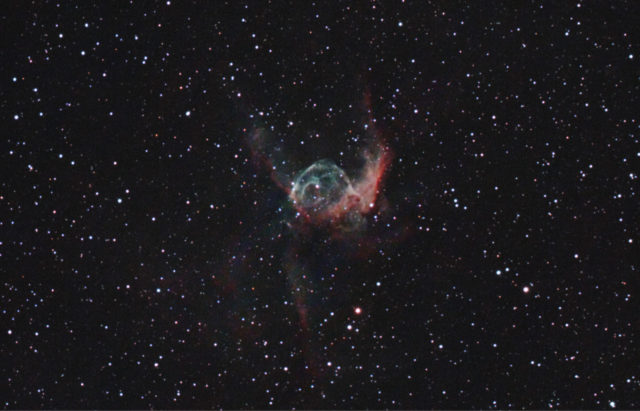
“Thor’s Helmet,” aka NGC 2359. First time I ever shot this with any camera. For years I’ve passed this guy up for bigger or better objects nearby, but not on this night. It was a main goal for this night’s imaging session. It did not get high enough to image until 2:00 am here and I took a nap as soon as I started it going. Luckily, I got enough data before sunrise to make a half-decent final image
UPDATE Nov 13, 2020:
More time added with 30×120 sec sub-images at Gain 20, offset 200 to the above. Total time 3 hrs, 22 min.
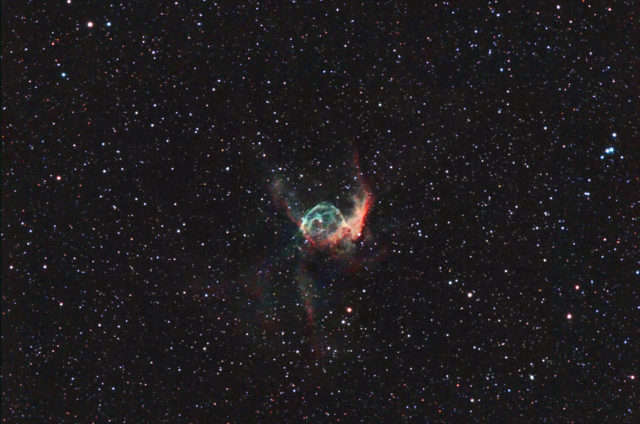
Horse Head and Flame Nebula in Full Moon Conditions
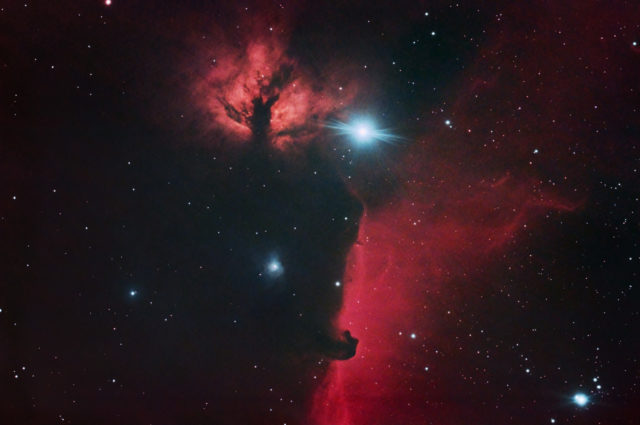
I was killing time while waiting for Thor’s Helmet to get into position, so I shot the Horsehead and Flame Nebula region. I used Fitsworks to crop out the dithering artifacts and set a black point and do the initial color balance. Photoshop and some hue and saturation adjustments to finish it off. Then, one pass with color blotch action and one horizontal banding removal action later and this is how it came out. A few other tweaks were done, too. Not too bad for the minimal effort and a full moon night.
The Bubble Nebula and M52 Open Cluster During a Full Moon
Eastern Veil on Oct 11, 2020
The Helix Nebula on Oct 11, 2020
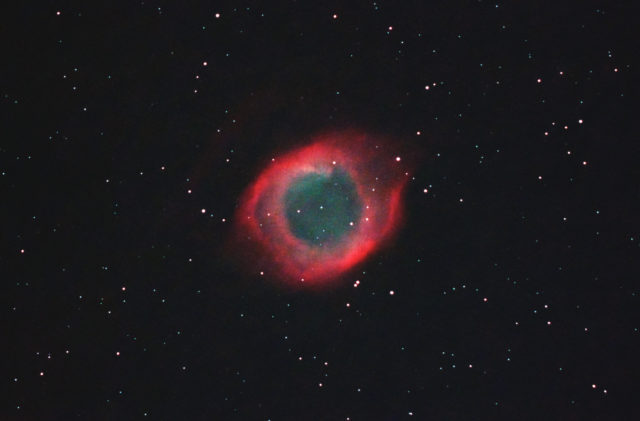
116 minutes in 15 sec sub-images (464×15.) QHY183c at -15C, Gain 37, Offset 200, L-eNhance filter, Televue TV-85 at F/5.6, SharpCap 3.2 LiveStacking with dark subtraction and dithering.
Taken from a metro area, Bortle 7-8 zone, the day after Hurricane Delta. Above average transparency and average seeing.
The Swan Nebula
The Butterfly Nebula
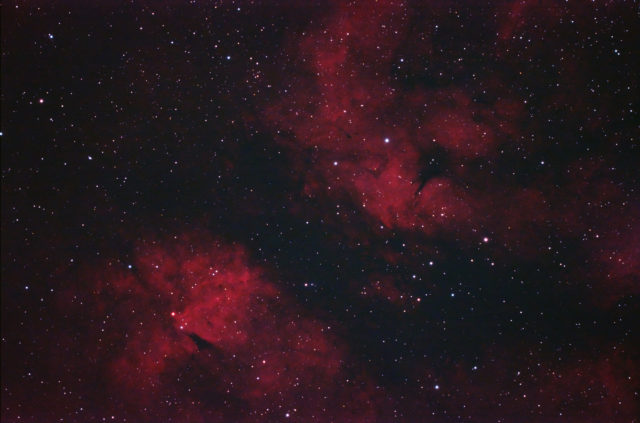
For a night with a full moon, this came out pretty good. Good transparency helped. Minimal processing with only color balance and saturation/hue adjustment tricks were used.
M16 – The Eagle Nebula
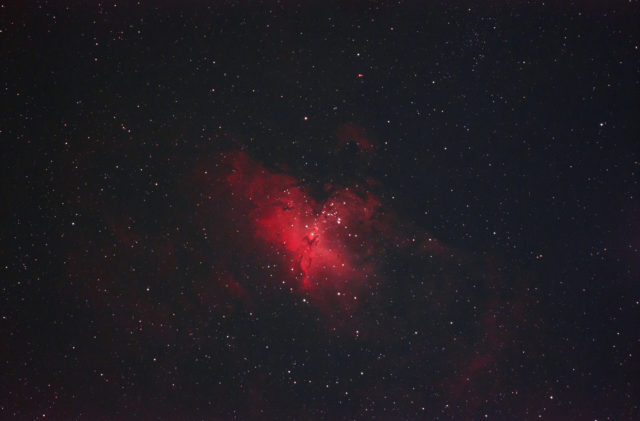
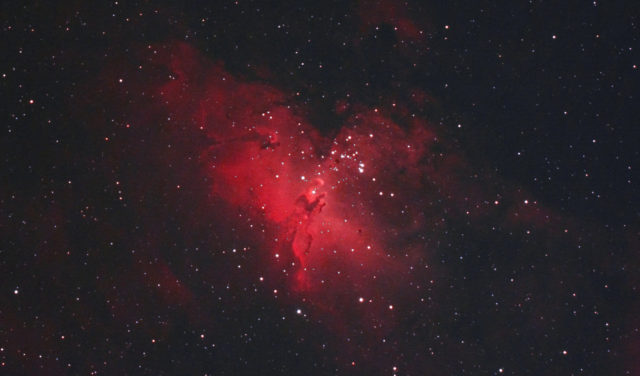
I shot this while waiting for the Moon and Mars to get higher in the sky on Friday, Oct 2nd, 2020. After shooting some moonrise shots, I turned the scope to this and got 40 minutes of sub-images before it went behind a tree.
It was also the first time I imaged using a generator for power and a battery backup unit to keep the scope running if I ran out of gas and had to refill the tank. I got a great deal on the generator that I could not pass up. It will work better in the field with my current imaging setup than the battery system I had before.

